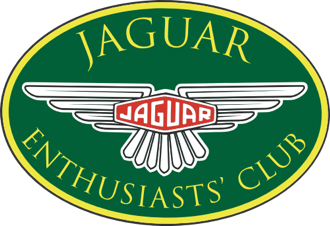
Jaw-dropping Design and Power
Forming one third of the whole car, the exotic E-type’s long and striking bonnet is one of its most notable features, emphasizing all that power under the hood. Hubba, hubba!
Celebrities at the time including George Best, Brigitte Bardot, Tony Curtis and Steve McQueen all fell for the E-Type’s charms and the sports car soon became synonymous with the Swinging Sixties.
And just because it’s attractive doesn’t mean that it’s shallow — behind the E-Type’s sexy and sleek silhouette is a gorgeously crafted piece of engineering.
With such an aerodynamic look, it’s really not surprising to hear that the man behind such a vision, Malcom Sayer, was an aircraft designer as well as a car designer.
Sayer brought many lightweight aircraft construction methods to Jaguar, becoming one of the first engineers to apply principles of aircraft design to cars.
According to a BBC article, Sayer had the opinion that the beauty of his cars was a product of a rational and scientific design process rather than style.
Apparently, he used to describe himself as an ‘industrial designer’ and ‘artist’ and loathed the term 'stylist', saying that he was not a hairdresser.
Racy by nature
And it’s not just the looks that are racy, the E-Type was as equally thrilling and appealing under the bonnet with a 265bhp, 3.8-litre straight six engine.
Capable of achieving 150mph, the E-Type lasted nearly ten years in this form until 1971 when it was redesigned to accommodate a new 5.3-litre V12.
With such speedy credentials the road-going E-Type was originally spawned from the D-type racers, which won the Le Mans 24-hour race three times in a row for Jaguar, during the 1950s.

Even the E-Type’s arrival was dramatic
With significant input into its development, Sir William Lyons never doubted that the media and the public would all fall in love with the E-Type.
Sure enough, the anticipation over the release of Jaguar’s new sports car was a media sensation before it was launched at the 1961 Geneva Motor Show.
With excitement building and everyone poised to get a closer look at the imminent show, Sir William Lyons decided last minute that he would need not one, but two E-Types to showcase at the 1961 Geneva Motor Show. The only problem was: the show was the next day and the car was in Coventry, in the UK. Err…
Rising to the challenge was Jaguar’s test driver, Norman Dewis, who at around 7pm on Tuesday 14###sup/sup### March in 1961, was tasked with the instant mission of delivering an E-Type from Jaguar’s Coventry factory to Geneva in less than a day.
Norman apparently drove virtually flat out through the night to get the iconic car to Geneva and only just made it, nearly missing the ferry as the ferry door was actually shutting — at this point one of the operators shouted down to Norman: "whats that car?" Norman shouted back let me on and I’ll show you — thankfully they obliged. Thanks Norm!
Norman is 95 this year and is still an active member of the Jaguar Enthusiasts' Club (JEC), driving Jaguars all over the world.
The JEC was formed in December 1984, by members of other Jaguar Clubs with the aim to assist enthusiasts in a friendly and informal manner to help keep their cars on the road with the minimum of cost. See our website for joining options, or call: 0117 9698186.
Affordable Supercar
After the launch the E-Type soon became known as the affordable supercar and became an instant icon.
Its design was one of the biggest breakthroughs, not just for Jaguar, but for motor engineering history in general.


